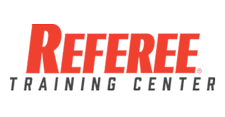By Lawrence Tomei
Here’s a simple question: Who’s in charge? In some officials associations or chapters, important decisions are made by the board of directors. In others, the officers (centered on the president) are responsible for all key outcomes. In still others, confusion reigns, leaving the membership uncertain who has the last word. If you had to pick, which scenario describes your association and which situation would you prefer?
Look to your bylaws for the answer. Bylaws define how an organization is managed and how it will conduct business. They parse out authority and decision-making and specify who should carry out governance responsibilities. They create a framework for the organization and aid in precluding, averting or resolving disputes. They also call out rules, meetings and elections. Every organization should have an adopted set of bylaws that are reviewed and revised periodically. If your bylaws are current, in theory governance should be simple. Reality, however, can be an altogether different matter. So, let’s help by laying out some ground rules.
DIRECTORS
A board of directors (the “board”) has final responsibility for the legal and financial management of the organization. Individuals comprise the board; however, the board only acts when it is in session. The board’s role is to establish the mission, goals, policies and strategic direction. Decisions like approving the budget, setting policy, working to ensure sufficient resources, determining the strategy to achieve the mission and assessing success are examples of legitimate board responsibilities. Boards generally do not carry out the normal operations of the chapter; instead, they delegate authority to the officers for the day-to-day activities.
OFFICERS
Officers are individuals elected or appointed to carry out the routine business of the chapter within their delegated scope of authority. That scope is defined by the bylaws of the chapter or delegated by the board and documented in their minutes. For chapters such as ours, the board may set the parameters for the election of a president, charging him or her with supervising and controlling the business affairs of the organization; for example, signing contracts and committing expenses within an approved budget. Most associations will elect a president, vice president, recording and assigning secretaries and a treasurer. Once the board delegates authority to those officers, they are empowered to act on behalf of the chapter within the scope of their delegated authority.
MEMBERS
Having active, involved members is the lifeblood of any organization. For association members, merely taking a game schedule and attending an established number of rules interpretation meetings are not enough. They often give adequate time and energy back to the association. Most board and chapter officers are unpaid volunteers. Members owe them to be:
Good followers. That means members can handle training, directions and criticism. They are open to new ideas and suggestions without becoming defensive. They uphold the values and objectives of the organization.
Active not passive. Members need the ability to acquire, evaluate and integrate information necessary to complete an assignment. They will ask questions to clarify goals or values. They contribute to training sessions and participate as decision-makers in the business of the association.
Responsible. Members should accept responsibility for actions and for decisions of the group. It’s OK to question or even oppose actions that are against the “good of the order.” Once a decision is made, they should support it.
Loyal and dependable. Finally, good members or followers act with integrity and recognize they cannot always have their own way. They feel good about themselves by contributing to the group and its goals and helping to achieve those goals.
Whether it’s a small chapter or a large officials’ organization, here are a few tips to share that will build an environment for success. Preceding each tip is a suggestion as to who has primary responsibility: the board, the officers, or the membership.
1. Board: Establish strategic objectives.
Defining the objectives and measures of success for the association is the ultimate responsibility of the board. Officers and members should refer often to those established goals and use them to put what matters front and center. Measuring performance against the stated objectives is also critical.
2. Officers: Get the right people on — and off — the bus.
When it comes to members of the team, take attitude over aptitude any day. People who want to succeed generally will if they’re supported with the right resources and environment.
3. Membership: Demonstrate commitment.
Members should demonstrate that they are invested in the success of the association and committed to its stated objectives.
4. Everyone: Be a coach.
We deal with coaches all the time. The best coach pushes people and offers support. A coach celebrates victory. Providing positive feedback and thanks for a job well done shows that your organization values, recognizes and rewards even small successes.
So, who’s leading your association?
Lawrence Tomei is the vice provost for academic affairs at Robert Morris University in Pittsburgh. He is a longtime member of the West Penn Football Officials Association.




